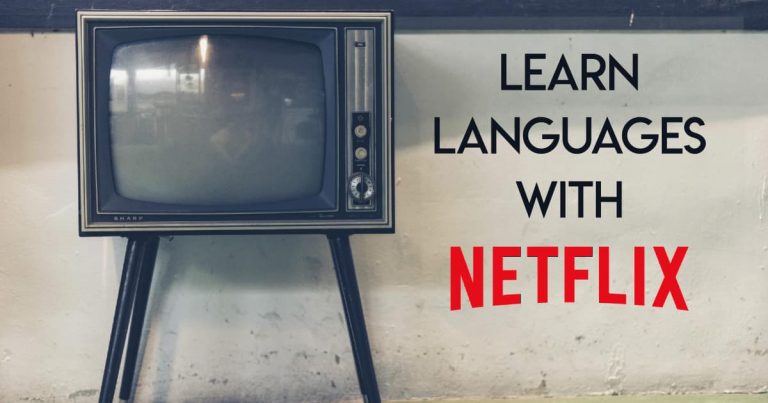Formal vs Spoken Persian — An Easy Learner’s Guide
If you’re learning to speak Persian, you need to know the difference between written Persian and spoken Persian.
People use written (formal) Persian in books, newspapers, the news, formal speeches, and poetry. It’s “standard” Persian, is usually called Farsi in local languages, and it’s nearly the same in Iran, Afghanistan and Tajikistan (although in Tajikistan, Farsi is called Tajiki and written in Cyrillic script).
However, people use colloquial spoken Persian in everyday conversation. Colloquial Persian is pretty universal in Iran, but varies between regions and countries.
Colloquial and written Persian are different enough to where if you’ve just studied written Persian, you wouldn’t understand colloquial Persian right off the bat. But if you learn a few rules, you’ll bridge the gap quickly!
If you want to learn spoken Persian and have freedom of choice, you should probably learn the Tehrani style. It’s like “Received Pronunciation” standard BBC-style English: Tehrani Persian is the most commonly accepted universal style.
Below we’ll explain how Tehrani spoken Persian varies from written, academic Persian.

Contents
What Are the Different Forms of Spoken Persian?
The Tehrani form of Persian is the most common, and most dominant. There are a few reasons for this.
Firstly, Tehran is huge. There are more than 10 million inhabitants, which means there are more people in Tehran than in all of Tajikistan.
Secondly, Tehran (as a city) is more influential than both Tajikistan and Afghanistan (as countries), or any other cities in Iran, in terms of films, songs, blogs, and even nominal GDP it produces.
Thirdly, Tehrani is often spoken outside Tehran. People in other Iranian cities may use Tehrani in daily life. And if another city produces a TV show, it’s likely to produce it using a Tehrani accent. Most people in Iran understand the Tehrani accent. It’s even spoken sometimes in Afghanistan from cross-border migration, and from the influence of Iranian media.
Finally, Tehrani Persian has actually gone beyond being just a spoken form: you can often see it in written form. You can find blogs, song lyrics, movie subtitles, and even books. People also use Tehrani for text messaging, chatting, and social networks more commonly than they use written Persian.
Aside from Tehrani, the other major accents inside Iran are Isfahani, Shirazi, Yazdi, and Mashhadi. They’re not considered prestigious and have declined in recent years. If a Yazdi or Mashhadi person visits Tehran he/she will probably speak Tehrani; the opposite is rare.
There are also ethnic accents in Iran, those of the Azeris, Arabs, Kurds, Mazandaranis, Gilaks and Balluchs. Those ethnic groups have other first languages, so their versions of Persian are influenced by those. When people of minorities speak standard Persian, they try to eliminate their accent (and words from other languages).
Verb Conjugation in Spoken Persian
In spoken Persian people conjugate verbs differently, simplifying/abbreviating verbs. This can be confusing to the language speaker. Persian’s spelling is already a little tricky, but this makes it trickier because there are even more vowels that go unsaid (or that are totally changed)!
In the table below you can see some conjugation differences between standard and spoken Persian for the verb “to eat” (خوردن, xordan). I use romanisation here as we’re discussing pronunciation (using an x to denote the “kh” sound).
| Person | Formal Singular | Formal Plural | Colloquial Singular | Colloquial Plural |
| First | -am mixoram = I eat | -im mixorim = we eat | -am mixoram = I eat | -im mixoram = I eat |
| Second | -i mixori = you eat | -id mixorid = you (pl.) eat | -i/-y (for verbs ending in long -aa) mixori = you eat | -in mixorin = you (pl.) eat |
| Third | -ad mixorad = he/she eats | -and mixorand = they eat | -e/-d (for verbs ending in long -aa) mixore = he/she eats | -an mixoran = they eat |
The present tense of many other verbs is contracted in spoken Persian.
For example
- The stem gu from “to say (گفتن, goftan) becomes contracted to just g. So “I am saying” becomes migam though it’s written migavim (می گویم)
- The stem shav for “to become” (شدن, shodan) becomes contracted to just sh-. So “happens” becomes mishe, even though it’s written mishavad (میشود)
- The step rav (to go) becomes contracted to just r. So “I am going” becomes contracted to miram, even though it’s written miravam (می روم).
So the important thing to remember is that verbs get simpler in spoken Persian and more letters go unsaid. This isn’t because the spelling is weird, it’s just how verbs are used in conversation.

Word order differences in spoken Persian
In standard Persian, the verb always comes at the end of the sentence. The order is subject-object-verb (S-O-V). But in spoken Persian, you can use subject-verb-object just as we do in English.
For example, in standard Persian the sentence “I went to the movies” becomes “من به سینما رفتم” (man beh sinamâ raftam), which is literally “I to the movies went“.
Or “My hovercraft is full of eels” becomes “هاورکرافت من پر مارماهى است” (hâvercrâft-e man por-e mârmâhi ast), which is literally “My hovercraft full of eels is“.
If you speak a Latin-derived language like French or Spanish, this sentence structure may be familiar to you when object particles are used, like “I don’t want it” (French: Je ne le veux pas, Spanish: No lo quiero).
You can also see S-O-V structures in many other languages, like Korean (which is purely S-O-V), in German in simple structures (“Ich habe nicht deinen Apfel gegessen“), or Chinese when using the 把 particle (“我把你的苹果扔掉了”).
But otherwise, you have to get used to modern Persian’s sentence structure. A quick hack is to imagine you’re speaking like Yoda. Slightly awkward, it is.
Mercifully, in spoken Persian you don’t have to use subject-object-verb, and can move words around to shift your emphasis, switching to subject-verb-object just as you do in English. For example, you can freely say “من رفتم به سینما” (man raftam beh sinamâ), and that’s fine.
Pronunciation differences in Spoken vs Standard Persian
In spoken Tehrani Persian, some letters are pronounced differently to how they’re written in standard Persian.
Firstly, in many common words ending with an m (م) or n (ن) you change the long â sound to u (the short u sound like in Spanish). For example
- The pronoun “that” (آن), pronounced as ân in standard Persian, is pronounced un in spoken Persian
- The word “bread” (نان), pronounced nân in standard Persian, is pronounced nun in spoken Persian
- The word “complete” (تمام), pronounced tamâm in standard Persian, is pronounced tamum in spoken Persian
Secondly, in spoken Persian, a few slightly cumbersome letter combinations are simplified.
For example, the definite direct object marker raa (را) is pronounced colloquially as –o, or –ro if the noun ends in a vowel or if it has the contrastive marker -e. This is just to make it easier to speak quickly. For example
- “I saw the house” (من خانه را ديدم), written as man xâne ra didam, is pronounced man xunaro didam
- “I ate the bread” (من نان را خوردم), pronounced man nuno xordam or man nunaro khordam
A bit confusingly, the word “and” (و) is simplified from va to just o as well. Context will make it clear whether you’re using the definite object marker or saying “and”.
Thirdly, consonant clusters are simplified.
- The cluster m followed by a b, p or m is simplified to an m. It’s subtle and you don’t have to do this, but you’ll notice people saying it. For example “Saturday” (شنبه), written shanbe, is spoken shambe.
- The cluster nd is simplified to just n. This is most commonly seen in verb conjugations. Like “they’re laughing” (می خندند), normally pronounced mixandand, is simplified to mixandan.
Finally, there’s a lot of contraction in spoken Persian. This happens mostly with the verb “to be”, just as it happens in English and French (e.g. people usually say “I’m” rather than “I am”).
For example, to say “This apple is so big”:
- Standard Persian: in sib xeili bozorg ast (این سیب خیلی بزرگ است)
- Spoken Persian: in sib xeili bozorg-eh (این سیب خیلی بزرگه)
The verb for “it is” was contracted to just ah “eh” sound at the end
Aside from all that, in spoken Persian a few random words change in pronunciation:
- “Another” (دیگر) is pronounced dige rather than digar
- The interrogative “magar” (مگر) is pronounced mage in spoken Persian
- Some words with a qaff (ق) in the middle become pronounced as if it it were a kh sound, e.g. “time” (وقت) is pronounced vakht rather than vaqt or vaght. Similar with “roof” (سقف)
Grammar modifications in spoken Persian
Aside from word order, there are a few other grammar modifications in spoken Persian that aren’t in the written form.
Firstly, there’s a marker called ezâfe that connects words and adds emphasis.
This isn’t so much a “colloquial” modification; it’s just something pronounced without being written.
It is pronounced as an ‘e’ at the end, or ‘he’ after a vowel ending. E.g.
- That specific girl (آن دختر): written ân doxtar, but spoken un doxtare
- This specific house (این خانه): written in xhâne, spoken in xunehe
Secondly, spoken Persian often omits prepositions. This is related to the modified simplified word order in spoken Persian.
For example, to say “I went home”, the correct structure is to say “I to home went” (من به خانه رفتم). But colloquially it’s fine to say literally “I went home” (من رفتم خانه).
Untranslatable colloquialisms
It’s funny asking Persians to try to translate these sounds and words because they seem so obvious, but they just don’t exist in other languages!
The particle “de” (ده) indicates strong feelings or emotions, or vague surprise.
For example, to say “What are you doing?” or “What is this?” you can simply say chekaar mikoni? (چه کار می کنی) or in chi-eh (این چیه). But if you put a deh in front of it, it emphasises the shock you’re seeing that prompted the question.
A second word, magar (مگر), often pronounced mageh, indicates a questioning feeling of slight confusion.
It’s used at the beginning of a sentence to question something that doesn’t sound quite right.
For example, take this conversation:
- “I think I’ll just park my car without paying for parking.”
- “Why, do you think the parking fine will cost less than to pay for parking?”
In the Persian version of this sentence, you could just use the translation for “why” (چرا, chera), but it would sound much more natural if you said chera mage (چرا مگر).
Colloquial Persian also uses reduplication a lot for emphasis, where they use a second made-up word stuck on to the original word. The English equivalent is things like “bits and bobs” for various miscellaneous items, rather than just saying “bits” (whatever a “bob” is, anyway). Or to “huff and puff” rather than just “huffing”.
There are a few ways of doing this, and for a full explanation, I think you should see Pontia’s excellent post on My Persian Corner explaining reduplication in Persian.
But a few common examples I hear in Persian are:
- کتاب متاب / ketaab metaab, “various books” (duplicating ketaab, “book”)
- شیرینی میرینی / shirini mirini, “all kinds of sweets” (duplicating shirini, “sweets”)
- کوچولو موچولو / kuchulu muchulu, “teensy weensy” (duplicating kuchulu, “small”)
- قاطی پاتی / ghaati paati, “all mixed up” (duplicating ghaati, “assorted”)
- الکی پلکی / alaki palaki, “totally at random” (duplicating alaki, “randomly)
Spoken Persian slang words/expressions
Lastly, colloquial Persian has a lot of slang, just like any other modern language.
This is a huge topic and one that’s continually evolving, but here are a few examples of things that you wouldn’t see formally written.
- damet garm (دمت گرم): Means “good on you” or “well done”. Literally “may your breath be warm”. I’ve heard this stems from the days when people used to smoke opium.
- be jahanam (به جهنم): Means “the hell with it!” or “who gives a damn!”. Literally “to hell”.
- zahr-e maar (زهر مار): a way of wishing someone dead when you hear of them doing something bad. “He crashed into your car and drove off? zahr-e maar!“
- zabun deraaz (زبان دراز): Someone with a loose tongue. Literally “long tongue”.
- khaak bar saram (خاک بر سرم): A way of saying “Holy crap! What (terrible thing) have I done!”, e.g. when you realise you left your phone on the bus. Literally means “dirt on my head”, as in “bury me alive”.
There you go, that’s all the colloquial language you need to know. Kidding. There’s a lot more! Persian is very rich with quotes and idioms, many of them from classical poetry. But the above are just expressions and curses people use every day.
Obviously, all kinds of swearwords fit into this category as well. But I’m the wrong person to ask how to swear in Persian.







Hello!! This is really great!!! I’m learning Persian and this article explained a lot!!!
Regarding this sentence: The English equivalent is things like “bibs and bobs”, the English equivalent is actually ‘bits and bobs’ as in bits of things. I’ve no idea what bobs is!! Hope that helps. 🙂
Thank you Amanda! That’s hilarious. I have so rarely said that out loud. I also know who I learned it from!